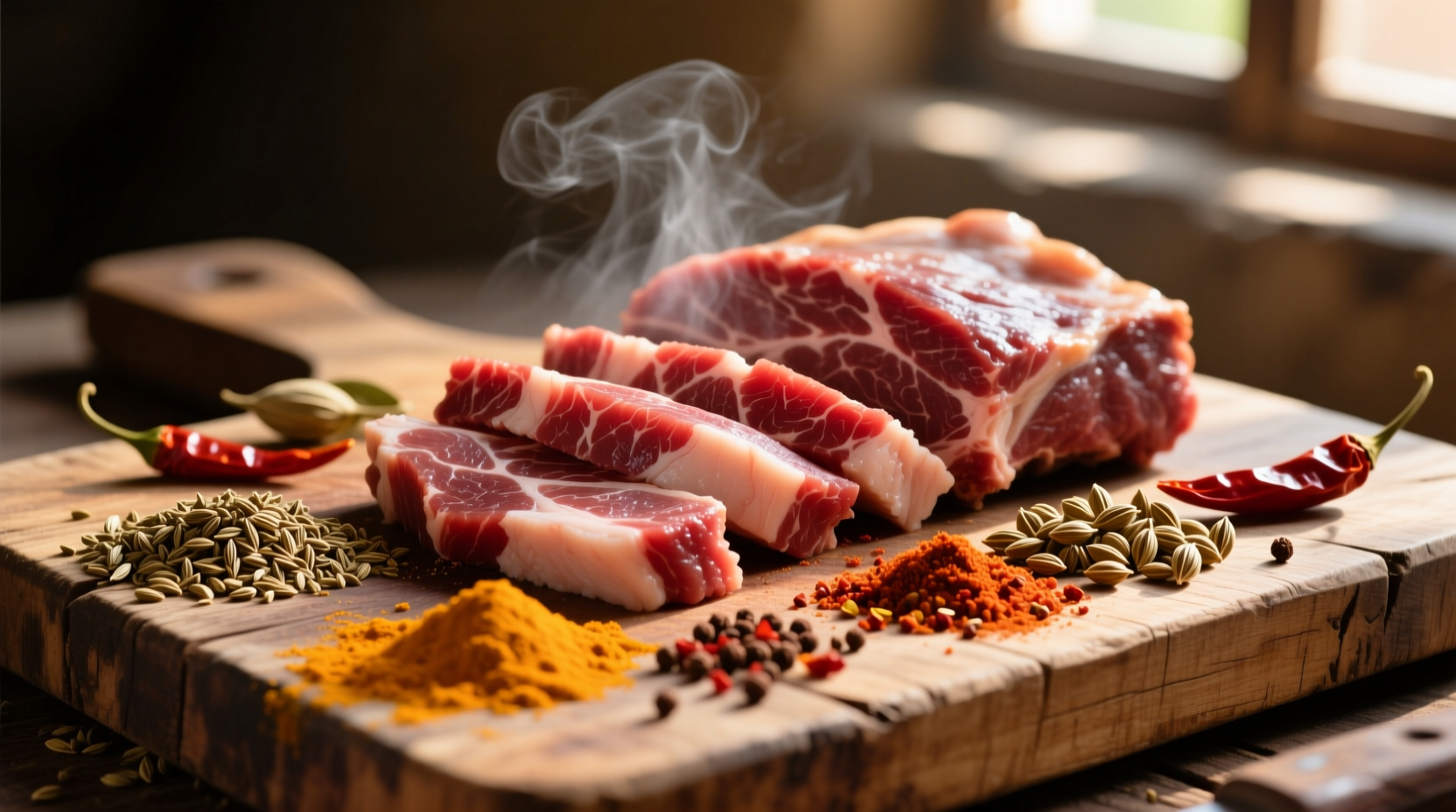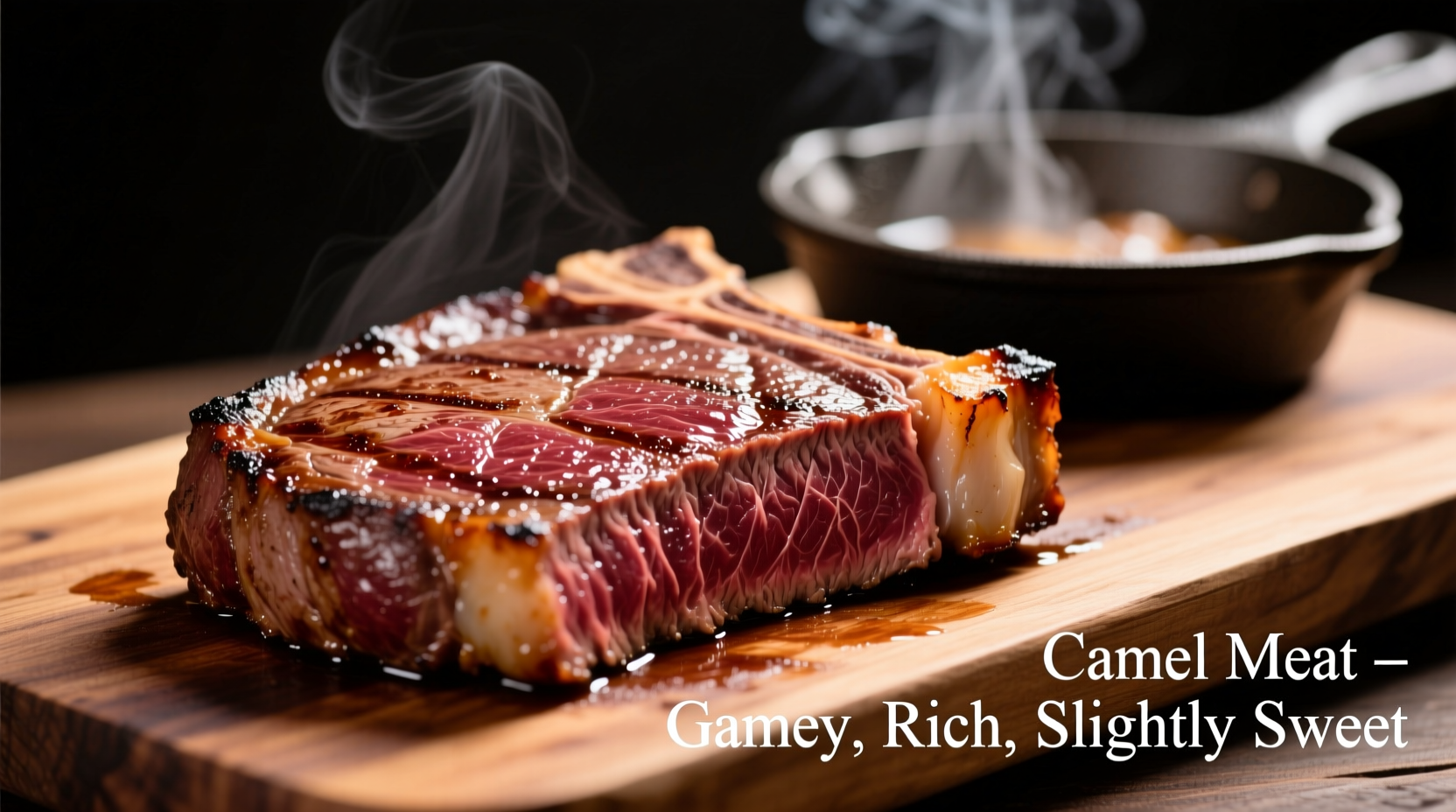Curious about exotic meats? You're not alone. As global cuisine exploration grows, more adventurous eaters are asking: what does camel taste like? This comprehensive guide delivers exactly what you're looking for - an honest, detailed breakdown of camel meat's flavor profile, cooking techniques, and cultural context from regions where it's a culinary staple.
Understanding Camel Meat's Unique Flavor Profile
When exploring what camel meat tastes like, consider these key characteristics that define its sensory experience:
- Flavor intensity: Mildly gamey with earthy notes, less intense than venison but more distinctive than beef
- Fat content: Significantly leaner than beef (about 3% fat versus 15-30% in beef)
- Texture: Tender when young, can become tough in older animals if not cooked properly
- Aroma: Subtle sweet undertones when raw, develops rich umami notes when cooked
The taste experience varies dramatically based on the camel's age and diet. Young camels raised on desert vegetation produce meat with delicate flavor, while older working camels develop stronger, more gamey characteristics. In Middle Eastern culinary traditions, camel milk-fed calves yield the most prized meat for its mild flavor profile.

How Camel Compares to Familiar Meats
Understanding what camel tastes like compared to beef helps set accurate expectations. This comparison table shows key differences:
| Meat Type | Flavor Profile | Fat Content | Cooking Recommendations |
|---|---|---|---|
| Camel | Mildly gamey, earthy, slightly sweet | 2-3% | Slow cooking, marinating, avoid overcooking |
| Beef | Rich, umami, varies by cut | 15-30% | Versatile cooking methods |
| Lamb | Distinctly gamey, fatty | 20-30% | Rare to medium preferred |
| Goat | Strongly gamey, earthy | 3-5% | Slow cooking essential |
According to the Food and Agriculture Organization of the United Nations, camel meat's leanness makes it particularly suitable for slow cooking methods that tenderize the fibers while preserving moisture. This explains why traditional camel dishes across North Africa and the Middle East typically feature braising, stewing, or slow-roasting techniques.
Cultural Context: Where Camel Meat Features Prominently
Camel isn't just survival food—it's a celebrated protein source with deep cultural significance across several regions. Understanding where camel meat is commonly eaten provides context for its culinary treatment:
- Saudi Arabia: Camel meat features in celebratory dishes like jareesh (cracked wheat stew with camel meat)
- United Arab Emirates: Traditional camel biryani showcases the meat's compatibility with aromatic spices
- Somalia: Hilib arwe (grilled camel meat) appears at special occasions
- Mongolia: Bactrian camel meat features in winter stews for its warming properties
- Australia: Feral camel meat has gained popularity as sustainable bush tucker
Research from the National Center for Biotechnology Information confirms that camel meat consumption follows specific cultural patterns where the animal holds economic and historical importance. In nomadic societies, camel meat traditionally appears during special occasions rather than daily meals, reflecting the animal's value as a transportation resource.
Practical Cooking Guide: Preparing Camel Meat
Knowing how to cook camel meat properly makes all the difference in your culinary experience. Follow these evidence-based recommendations:
Marinating Techniques
Due to its leanness, camel benefits significantly from marinating. Traditional Middle Eastern preparations use:
- Yogurt-based marinades (enzymes tenderize without acid damage)
- Garlic, ginger, and cardamom for flavor penetration
- Minimum 12-hour marination for optimal results
Cooking Methods That Work Best
Professional chefs specializing in Middle Eastern cuisine recommend:
- Slow braising: 3-4 hours at 300°F (150°C) for tougher cuts
- Pressure cooking: Reduces cooking time while maintaining tenderness
- Avoid grilling: Lean meat easily dries out on direct high heat
- Resting time: Minimum 15 minutes after cooking to redistribute juices
Flavor Pairings That Enhance Camel
Based on traditional preparations documented by culinary anthropologists, these combinations work exceptionally well:
- Dried limes (loomi) for brightness without acidity
- Rosewater and saffron for celebratory dishes
- North African spice blends like ras el hanout
- Preserved lemon to complement the earthy notes
Nutritional Benefits Worth Considering
Beyond flavor, camel meat offers notable nutritional advantages according to research published in the Journal of Ethnic Foods:
- Higher iron content than beef (2.5mg per 100g vs 2.1mg)
- Rich in vitamin B12 (providing 60% of daily value per serving)
- Contains healthy omega-3 fatty acids despite low overall fat
- Lower cholesterol levels compared to traditional red meats
- Naturally lean protein source (22g protein per 100g serving)
These nutritional properties explain why camel meat features prominently in traditional diets across arid regions where other protein sources may be scarce. The meat's composition reflects evolutionary adaptations to desert environments, resulting in a nutrient-dense food source well-suited to harsh climates.
Finding and Selecting Quality Camel Meat
For those wondering where to buy camel meat, availability varies significantly by region:
- Middle East and North Africa: Widely available in specialty butcher shops
- United Kingdom: Available through specialty meat suppliers like Dromedary Meats
- United States: Limited availability, primarily through online exotic meat retailers
- Australia: Increasingly available as sustainable alternative protein
When selecting camel meat, look for:
- Bright red color (indicates freshness)
- Fine grain texture (sign of younger animal)
- Minimal connective tissue (easier to cook)
- Reputable source with clear origin information
Freezing camel meat before cooking can improve tenderness by breaking down muscle fibers—a technique documented in traditional Bedouin cooking methods that's now supported by food science research.











 浙公网安备
33010002000092号
浙公网安备
33010002000092号 浙B2-20120091-4
浙B2-20120091-4